
| Common Anthelid (one synonym : Darala excisa Walker, 1855) ANTHELINAE, ANTHELIDAE, BOMBYCOIDEA | (donherbisonevans@yahoo.com) and Peter Marriott & Stella Crossley |
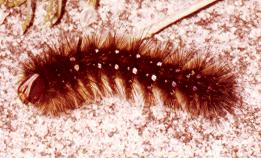
early instar
(Photo: Don Herbison-Evans, Sydney, Australia)

| Common Anthelid (one synonym : Darala excisa Walker, 1855) ANTHELINAE, ANTHELIDAE, BOMBYCOIDEA | (donherbisonevans@yahoo.com) and Peter Marriott & Stella Crossley |

early instar
(Photo: Don Herbison-Evans, Sydney, Australia)
This Caterpillar is brown and hairy with a brown head capsule and a white adfrontal area. Its head looks as though it has two large brown eyes.
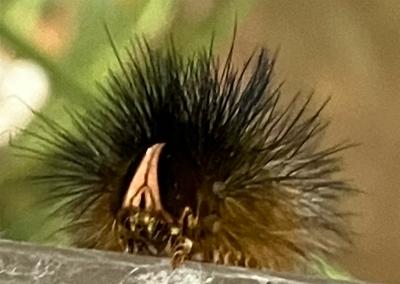
Its hairs are in tufts of brown and white, with a longer pair of black tufts on the thorax. There is a double row of alternating pink and white verrucae along the back, except they are all pink on the last three segments. The white verrucae on the thorax are larger than those on the abdomen.
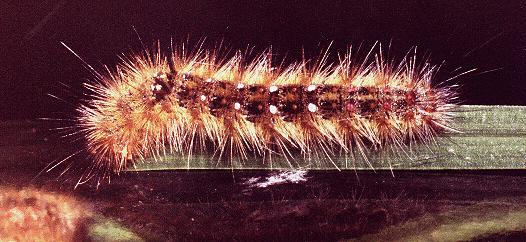
The species has been little studied, and the one name is probably being used to cover a number of similar species. Their caterpillars appear to differ in their food-plants. and the number and placing of the pink spots. The race illustrated here feeds on various Grasses (POACEAE) including
Possibly another race has been found that feeds on
Yet another race in which the caterpillar has all white spots (and no pink ones) has been found feeding on:
In Tasmania, caterpillars of what appear to be the same species only accept :
The caterpillar appears to be prone to attacks by a red mite.
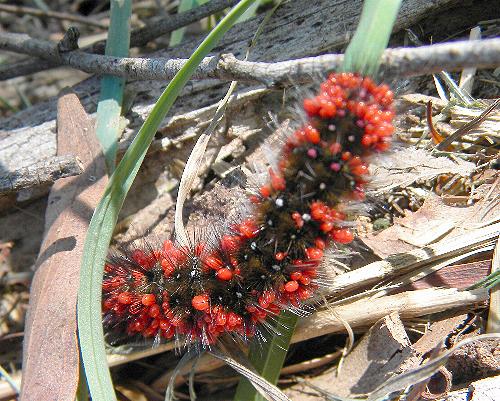
The caterpillar appears to be active on the ground in daylight hours, but at dusk it climbs any available object to spend the night well above ground level.When frightened: it curls into a spiral with the head in the middle.
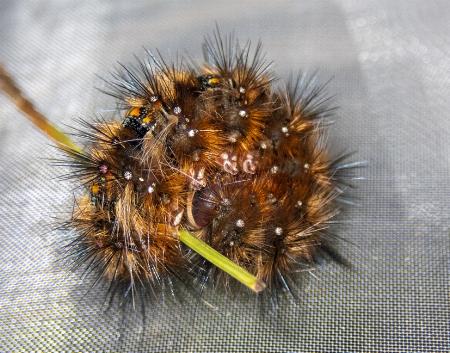
The caterpillar when mature grows to a length of 5 cms. It pupates in a double-walled cocoon in the debris on the ground. The cocoon has a length of about 3 cms.
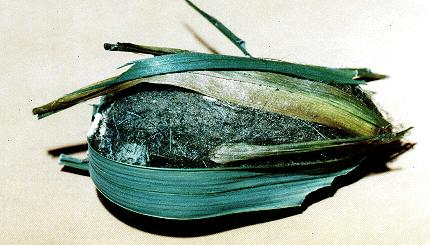
The male moth is basically buff colored. The forewings each have two brown spots and a thin brown line running parallel to the margin. The hindwings have a sparse row of brown dots running along an arc parallel to the margin. However variants frequently occur that have various degrees of dark blotching, as well as having a background colour varying from orange to fawn and even a greenish colour. All varieties of males have a wing-span of about 3 cms.
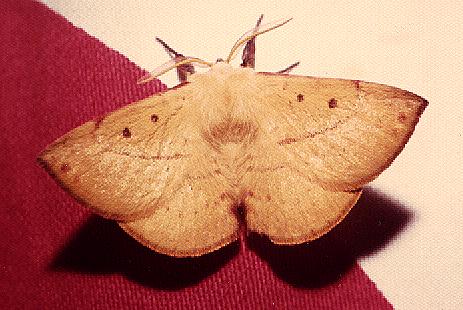

Males
(Specimens: courtesy of the
Macleay Collection, Chau Chak Wing Museum, University of Sydney)
The females look completely different. They are much bigger, having a wing span of about 5 cms. However they have the same coloration: basically buff with a pattern of darker lines and dots.
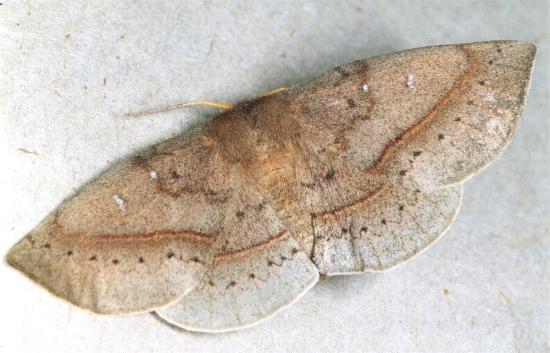
Specimens have been taken all along the eastern part of Australia, for example in Bundaberg, Sydney, and Melbourne. In Melbourne, adults may be found most months of the year.
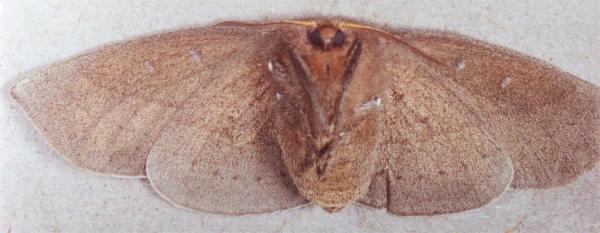
The caterpillar starts life as an irregular row of buff coloured eggs each with a length of about 1 mm. They are laid, often in a row, on the leaf of a food plant.
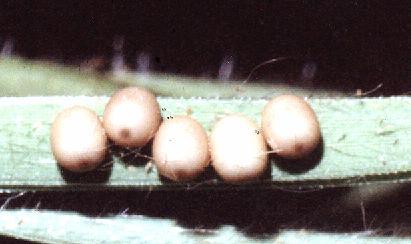
We have counted the number of adults that we encountered in each month of the year in Sydney and in Melbourne. There seems to be two generations per year in Sydney, but only one in Melbourne:
| area | Jan | Feb | Mar | Apr | May | Jun | Jul | Aug | Sep | Oct | Nov | Dec |
| Sydney |
|
|
|
|
|
|
|
|
|
|
|
|
| Melbourne |
|
|
|
|
|
|
|
|
|
|
|
|
The species has been found in
Further reading :
Pat and Mike Coupar,
Flying Colours,
New South Wales University Press, Sydney 1992, p. 25.
Peter Hendry,
The Anthelidae,
Butterflies and Other Invertebrates Club,
Metamorphosis Australia,
Issue 50 (September 2008), pp 27-31.
Peter Marriott,
Moths of Victoria - Part 1,
Silk Moths and Allies - BOMBYCOIDEA,
Entomological Society of Victoria, 2008, pp. 16-19.
Francis Walker,
Catalogue of Lepidoptera Heterocera,
List of the Specimens of Lepidopterous Insects in the Collection of the British Museum,
Part 4 (1855), p. 889.
Paul Zborowsky and Ted Edwards
A Guide To Australian Moths,
CSIRO Publishing, Melbourne 2007, p. 156.
 caterpillar |  butterflies |  Lepidoptera |  moths |  caterpillar |
(updated 26 April 2013, 29 September 2025)